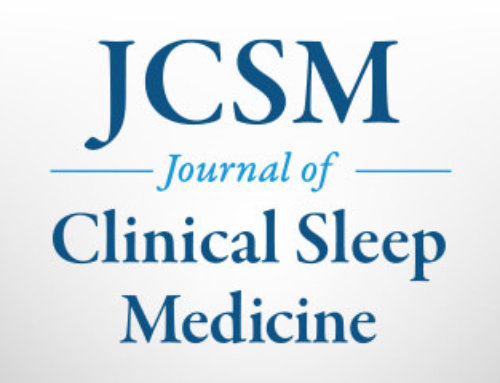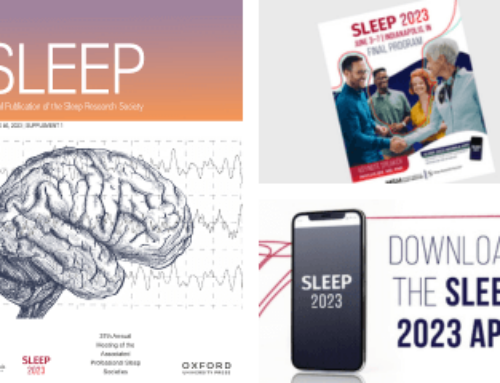Below is a transcript of the talk delivered by Dr. Clete A. Kushida, past president of the American Academy of Sleep Medicine:
As President, my primary responsibility this past year was to serve as a representative for all the members of the American Academy of Sleep Medicine, which includes sleep clinicians and researchers, dentists, technologists, allied health professionals, and trainees.
In order to better respond to the needs of this diverse membership, this past year, we invited chairs of our committees to participate in two of the four meetings of our Board of Directors. These representatives provided our Board with the concerns and needs of their committee members; this input is critical to the continued success and growth of our field, particularly in the face of our troubled economy and inevitable health care reform.
As many of you have experienced first-hand, sleep technology faces continued challenges. For example, respiratory therapy organizations have engaged in state-level legislation over the issue of scope of practice for sleep technology. The Academy has worked diligently with state sleep societies to fight these existing bills and to introduce fair and balanced legislation that protects the scope of practice for sleep technologists. Additionally, the Academy leadership has opened a dialogue with the American Association of Respiratory Care and the American Association of Sleep Technologists to reach agreement on the scope of practices for sleep technologists and respiratory therapists. Your leadership has also worked with the Board of Registered Polysomnographic Technologists and the American Association of Sleep Technologists to introduce a new Certified Polysomnographic Technician Certificate for Sleep Professionals. This entry-level certificate will hopefully entice more individuals to enter the sleep technology profession and subsequently result in a highly-qualified pool of certified sleep personnel.
At last year’s Membership Meeting, I outlined what would be the main themes of my year as President. I will now follow-up on these themes, and the Board’s actions that relate to these themes.
First, as clinicians, we must use the best evidence possible in making our health care decisions and optimize our delivery of sleep medicine services. The Board recently approved a practice parameter and best practice guide developed by the Standards of Practice Committee as well as a clinical guideline created by a presidential task force. The Board also occasionally works with other organizations with respect to guidelines that are relevant to sleep medicine, and earlier this year endorsed the American Academy of Neurology’s evidence-based guideline, Treatment of Non-Motor Symptoms of Parkinson’s Disease.
Optimizing the clinical practice of sleep medicine extends to such routine tasks as scoring of our patients’ sleep studies; the Board has initiated an interscorer reliability program that will help our centers standardize the scoring of these studies and meet our accreditation standards. With health care reform, as a specialty and thriving field in medicine, we must consider the implications that this reform will have for our practices, institutions, and patients. Our newly-created Coding and Compliance Committee, which is a standing committee that replaces both the Health Policy Committee and the Presidential Committee on Coding and Compliance, is chaired by Dr. Amy Aronsky, with assistance from Dr. Sam Fleishman. These individuals have diligently worked to minimize the proposed decreases in reimbursement for sleep care services. Also, in order to continue to ensure that sleep medicine will remain viable and strong in the future, I initiated a Presidential Task Force on the Future of Sleep Medicine. The first meeting of this task force, under the excellent leadership of Dr. Susie Esther, was held on December 7 of last year. The findings of this task force will be published later this year, and the plan is to continue to bring together thought leaders and the major stakeholders of our field to help us map strategies to successfully navigate the uncharted territory that lies ahead, so that we will be able to forecast where our field will be five, ten, even fifty years from now.
This is especially important with changes stemming from recent CMS decisions, such as those regarding portable monitoring and the relationships between sleep centers and DME companies. With all of these changes and development of new sleep technologies, it is inevitable that the way in which a sleep specialist will manage his or her patients decades from now will be radically different from the current practice of sleep medicine. A Practice Development Advisory Council will, in addition to the Future of Sleep Medicine Task Force, assist the Board in ensuring that sleep medicine will continue to thrive. Additionally, the Sleep Apnea Definitions Task Force, headed by Dr. Nancy Collop, will be modifying the respiratory rules of the Scoring Manual, revising the classification system for limited channel monitoring devices based on type of data recorded, and developing a revised guideline for use of these devices that will include scoring methodology. In November of 2009, the Board assembled a Durable Medical Equipment Task Force, chaired by Dr. Amy Aronsky, to create a non-Medicare DME accreditation program modeled after the CMS DME accreditation model. At our last meeting, the Board replaced this task force with a standing subcommittee of the Accreditation Committee, the DME Accreditation Subcommittee. We must continue to anticipate any and all changes that might potentially affect our practice of sleep medicine, and your experienced Board of Directors has a solid track record of being able to recognize and disarm potential threats to our field.
Second, as researchers, we need to prepare ourselves for the anticipated dropoff of funds available for scientific endeavors provided to the National Institutes of Health as a result of the federal stimulus money. The American Recovery and Reinvestment Act will provide a total of 10.4 billion dollars to the NIH for two years. These funds have allowed our scientists to collaborate with their colleagues from other disciplines to develop innovative and creative research projects. Last month, Drs. Clif Saper and Jim Walsh representing the SRS, and Dr. Pat Strollo and I met with Drs. Jim Kiley and Michael Twery of NHLBI to express the unified support of both of our organizations toward the Sleep Disorders Research Advisory Board and to further other sleep research-related initiatives.
As a field, we must nurture this research by continuing to provide funds through the American Sleep Medicine Foundation, and Dr. Steven Shea, President of the American Sleep Medicine Foundation has recently developed a strategic plan that will assist in the development of new investigators and continued support of established scientists.
Third, as mentors, we need to continue to support young investigators. This past April, we had our second successful AASM Young Investigators Forum chaired by Dr. Stuart Quan. This Forum was designed to provide young investigators with the tools they need to launch a successful research career, and we will track these trainees over time in order to ensure that they will be able to succeed in academic sleep medicine. The Board has also renewed its commitment to worthwhile research funding programs such as the Foundation’s Physician Scientist Training Awards so that these young investigators have the funds necessary to fulfill their academic dreams.
Additionally, I’ve asked several experienced investigators of the AASM and SRS to contribute chapters to a new publication, entitled A Guide for Developing, Writing, and Implementing Research Grant Proposals. This guide, published jointly by the AASM and SRS, is currently available to several groups within these organizations at no charge, and the goal is to update it at regular intervals in order to keep the information current and relevant to trainees.
As a former trainee, my interest in the field of sleep was supported at an early age. Students as young as those in high school find sleep and its disorders fascinating, and this burgeoning interest, if nurtured, may grow as their education continues and may lead to a career that incorporates the clinical practice and/or research exploration of sleep. This year, the Board initiated a high school essay contest. Members of the Education Committee and the Board served as essay reviewers, and they reported that some of these essays, like the two we honored today, were on par with those written by graduate students. I’m pleased to announce that all students who wrote essays received a $100 savings bond toward their education. The Board is also working on a sleep-related lesson plan for high schools that will enable high school teachers to introduce sleep topics to their students.
Fourth, as citizens, there continue to be crises that impact our world, including natural disasters such as the earthquakes in Chile and Haiti and man-made problems such as the recession, the recent Gulf oil spill, and global warming. We’ve learned that we must pull together to overcome these crises. In parallel to these changes affecting our nation and the lessons learned from them, we need to share ideas and programs with our international colleagues and to increase availability of our educational resources to those in other countries. Although we are called the American Academy of Sleep Medicine, about 12% of our members are from outside of the United States. Our Board, at the request of our international colleagues, launched a program to provide board certification tools for international sleep specialists. This initiative allows countries that do not have sleep medicine board certification programs to establish them; this program starts with eight pilot countries: Canada, China, Hong Kong, India, Korea, Taiwan, Thailand, Turkey. We are also exploring on a country-by-country basis the need for sleep education and training opportunities for their clinicians and technologists. We need to continue to work together to meet the needs of our international sleep specialists and to help foster sleep technology throughout the world.
Our field has continued to grow; in order to accommodate this growth and also to efficiently house the expansion of our courses and other educational initiatives, we will be moving into a new building in Darien, Illinois right after this conference ends. The planning of this new home for the Academy was initiated during the presidential terms of Drs. Alex Chediak and Susie Esther, and Dr. Pat Strollo will preside over its grand opening.
This past year has been a challenging one, yet at the same time both fun and extremely gratifying. What the year has taught me is that the sleep medicine field is in extremely good hands. We have brilliant clinicians and researchers who strive to make our field better, to ensure that it continues to rise in prominence, and, most importantly, who give their time freely to serve as dedicated teachers and mentors. My experience in working with the Board of Directors, committee chairs, and the general membership is that there is passion, enthusiasm, and boundless talent and creativity. This is truly the strength of our Academy. With a talented and dedicated staff, we will continue to expand our field and to attract the best minds to delve into the mysteries of sleep. At this time, I’d like to personally thank one member of the staff who has consistently done exemplarily work for Board of Directors and has assisted me a great deal this year. I appreciate Jordana’s attention to detail, promptness, diligence, and the overall fine quality of her work, and would like to present to her a small token of our appreciation.
Despite the unprecedented challenges that lie ahead, this year has not diminished my optimism for our field. Although we might not always agree, I firmly believe that our members deeply care about the growth and success of the field of sleep medicine, and we are able to work together toward shared goals, setting aside our egos and self-interests. To conclude, the members of our Board have worked selflessly and tirelessly to serve the field; and I, like the rest of our membership, look forward to our Board leading us toward the bright future that lies ahead. Thank you.



